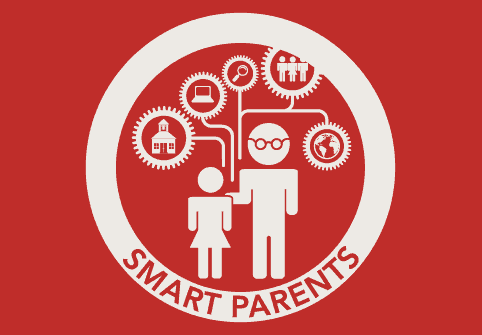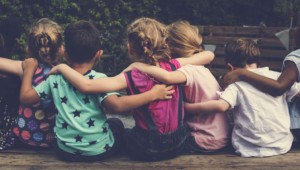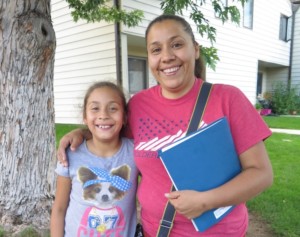Learning is Personal for Your Child

Barbara Bray
Personalized learning is about people taking responsibility for their learning. Yet the words “Personalized Learning” is a term that means different things to different people depending on where and how it is referenced. Some believe it is about promoting programs or tools that personalize learning for you, where others emphasize that learning starts with the learner.
Technology is moving the idea of “personalized” forward everywhere we look. When you order a book, movie, or other product online, you probably get “personalized” recommendations for similar products based on your previous selections. Now with social media, you are even getting products, services, and suggestions to connect to people based on other products, services, and people like you.
Is personalizing learning done to or for you, or do you personalize learning for yourself? To really personalize learning, the roles of the teacher and learners change. The learner owns and drives their learning with the guidance of a teacher as partners in learning. The learner may also seek others to support their learning as mentors or advisors. These others could be a parent, mentor, someone from the community or even another learner.
All learning is personal.
Losing Engagement and Motivation
In schools today, the focus continues to be on high-stakes standardized tests as the sole assessment of student achievement. Teachers change instructional practices based on that data and follow pacing guides to meet the standards. When kids are less engaged in learning, there are more discipline issues. The use of data is to determine the problems for kids at-risk and then come up with intervention strategies. With this approach, teachers tend to be the ones accountable for the learning. This seems backwards. Kids need to be the ones responsible for their learning.
Just think of children today. They live in a digital world with information immediately available. If they need to learn something, they know how to search online or on their mobile device or watch tutorials on YouTube or ask a friend. Access to news is different. They find out about events on social media instead of newspapers and TV. Virtual connections mean more than real ones. It’s a different world than the one their parents experienced. Even with all of the changes, school still looks and feels the same.
Parents may be trying to figure out how to help their children learn. Have you ever thought of these questions?
- Is your child depressed about school?
- Are they telling you they are bored or frustrated about what they are learning?
- When you ask them about school, they say “fine” or “okay” but you know it isn’t?
- Has your child started having more problems at school or with a specific subject?
Understanding How your Child Learns Best
Every child is unique. Just look at your own child. You probably know that they have their own interests, strengths and challenges. If you have more than one child, you definitely know each one is different. Because of the differences with so many in the class, school may not work for all children. Teaching was designed to teach to the average, but there is no average. I am sure that you agree that your child is definitely not average. So how do you help your child understand how they learn?
Access. Consider the best way your child accesses and processes information through digital media, visual media, audio, touch, or even printed text.
Engage. Describe how your child engages with content and concepts using multiple strategies that may include visuals, problem-solving, collaborating with others, hands-on and reflecting.
Express. Determine how each learner expresses what they know and understand through actions, such as writing, acting, presenting, building, drawing, or sharing.
Go with your strengths, find your interests, talents, and passions, then you will discover your purpose.
6 Steps to Motivate Your Child to want to Learn
How we make sense of learning is similar to how we make sense of other things. We do it gradually through experiences and building knowledge as we go. It’s important to talk, think and reflect about learning. Just imagine your child, motivated and engaged while sharing what they learned and what they are passionate about. Use the following strategies with your child:
- Create a safe flexible learning environment where they can try new strategies and tools with multiple options to sit, stand, lie down, and even pace. Find out if they need a quiet space to learn or work better with music or noise in the background.
- Review what they are expected to learn at school. Then ask them how they prefer or need to access or get information about the topic so it makes sense to them. Encourage them to talk about different ways they like to get information. You may find they like looking up the information themselves, watch a video or talk to you about it.
- Talk about what they are learning and discuss if it is relevant to them and the real world. Some children have trouble with abstract ideas and need a personal connection so it makes sense to them.
- Make sure your child knows how to be safe and responsible online so they are effective global digital citizens.
- Find out how your child prefers and needs to engage with the content. You may find your child prefers to be outside so help them do projects involving nature. Or they enjoy working with another child so set up times for planning, working, and playing.
- Encourage your child to reflect on their learning as they learn. Reflection is personal so invite your child to reflect in a journal. When they reflect, they have to notice their learning and think about it when they write. Some questions for them to think about as they write their reflection: What did I learn? How did I learn? What did I like? What would I do different next time?
“Guide your child to acquire the skills to find the appropriate resource, tool or app for the task.” -Kathleen McClaskey
These are just a few ideas from Make Learning Personal that I co-authored with Kathleen McClaskey. We wrote this book for anyone who wanted to transform teaching and learning. It is about the What, Who, Wow, Where and Why of Personalized Learning to help change the culture of schools and to build a common language around the term: personalized learning.
This blog is part of our Smart Parents series in partnership with the Nellie Mae Education Foundation. For more information about the project, see Parents, Tell Your Story: How You Empower Student Learning as well as other blogs:
- Vanessa’s Journey: Empowering Special Education Through Technology
- One Family’s Journey Exemplifies Anytime, Anywhere Learning
- The Teenage Brain: Scaffolding the Brain for Lifelong Learning

Barbara Bray is Creative Learning Strategist, Co-Founder of Personalize Learning, LLC and co-author of Make Learning Personal. Follow Barbara on Twitter, @bbray27.






0 Comments
Leave a Comment
Your email address will not be published. All fields are required.